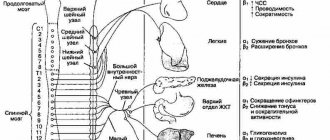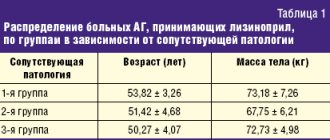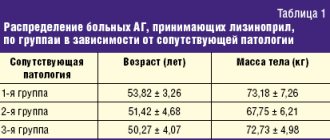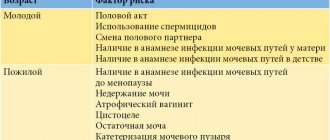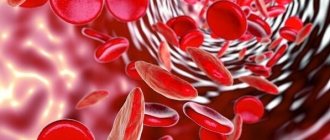Hypertensive crisis is a severe form of arterial hypertension. Can occur at any time. More often observed in women than in men. The cause of the occurrence lies in the disruption of blood pressure regulation. If arterial hypertension is common in 40% of the population, then in only 1% of cases there may be a sudden jump from baseline values, which leads to a sharp deterioration in health with a high risk of death.
What exactly are the symptoms of a hypertensive crisis should be known not only to hypertensive patients, but also to their loved ones. Normal and elevated blood pressure values are individual for each person. When a crisis occurs, signs of impaired cerebral or coronary blood supply are observed.
Symptoms and signs of their manifestation
When a hypertensive crisis occurs, the following symptoms appear:
- nausea, vomiting, suffocation;
- convulsions and loss of consciousness;
- intense headache;
- clouding of consciousness and disturbances in speech and vision;
- heart pain and palpitations;
- trembling, sweating, chills;
- feeling of lack of air;
- Possible loose stools.
Are you experiencing symptoms of a hypertensive crisis?
Only a doctor can accurately diagnose the disease. Don't delay your consultation - call
Types of pathology
Types of hypertensive crisis are classified depending on the manifestation of symptoms. Medical care is selected individually according to indications and clinical manifestations. Hypertensive crisis types I and II, complicated and uncomplicated forms are types of pathology. Hyperkinetic crisis or type I is characterized by rapid development. Acute headache and dizziness, nausea, and vomiting occur. The state is close to fainting. Blood pressure rises above 200 mm Hg. Art. (systolic - upper), which is why red spots appear in the face, neck, chest, feeling of heat, tachycardia, moist skin.
Hypokinetic crisis or type II occurs when there is a violation of the treatment regimen or rhythm of life in patients with stage III arterial hypertension. Deterioration in well-being develops more slowly, although the intensity remains noticeable. The severity of the headache increases exponentially. Diastolic (lower) pressure remains in the range of 140-160 mmHg. Art. Symptoms include nausea and vomiting, lethargy, blurred vision and hearing, and a tense pulse.
A complicated hypertensive crisis has several vectors of development, which affects the type of complications. There are such subtypes: coronary, asthmatic, cerebral. Against this background, pulmonary edema or cardiac asthma, acute left ventricular failure may develop. Cerebrovascular accidents, ischemic stroke and other pathologies may occur. An uncomplicated hypertensive crisis requires pressure correction in the next 24 hours, but it has an important nuance - there is no risk of target organ damage.
Why does hypertension develop?
Various factors contribute to the development of hypertension; very often patients are unaware of their disease until the first hypertensive crisis.
Most often, hypertension develops in people who work night shifts and have heavy physical and psycho-emotional stress. In the development of the disease, hereditary predisposition, intrauterine development disorders, birth injuries, as well as various external factors are of great importance: climate, unbalanced nutrition, work in harmful conditions, harsh ecology, personality traits and psyche, and the ability to build relationships with people.
A hypertensive crisis is a violation of the mechanisms of blood pressure regulation, which occurs abruptly, causing circulatory disorders in the organs. There are two types of crises: hyperkinetic (at the early stage of arterial hypertension) and hypokinetic (at a late stage of the disease, against the background of initial high blood pressure). A hyperkinetic crisis develops acutely, is accompanied by severe symptoms of the disease, and adrenaline predominates in the blood. The hypokinetic crisis is less acute; norepinephrine predominates in the blood. The diagnosis of “hypertensive crisis” is made based on several indicators:
- High rise in blood pressure.
- Sudden onset of crisis.
- Symptoms of cardiac, cerebral and vegetative nature.
Preventive measures
The best prevention of a hypertensive crisis is awareness of the peculiarities of the occurrence of attacks, an understanding of how an increase in blood pressure occurs and the causes of this phenomenon.
Timely diagnosis and interaction with a doctor, following medical recommendations is an opportunity to prevent the development of crises of varying degrees. Hypertension can be controlled if:
- avoid drinking alcohol;
- stop smoking;
- reduce salt intake to 5 g per day;
- normalize body weight;
- adhere to antihypertensive therapy;
- reduce stress levels;
- avoid overwork.
Information about the diagnosis and treatment of patients
Regardless of the causes of a hypertensive crisis in a man or woman, diagnosis comes first to determine the further course of treatment. Symptoms may coincide with other pathological conditions. Diagnosis of hypertensive crisis includes the following procedures and studies:
- Analysis of urine;
- ECG, CT, radiography;
- heart rate measurement.
The doctor needs to collect a detailed history of the patient's condition. When the attacks began, the frequency of their occurrence, symptoms, whether the patient receives regular antihypertensive therapy, what methods were used to reduce blood pressure, whether there was experience in independently stopping the crisis, the presence of concomitant diseases - basic information for the doctor during the diagnosis.
Hypertensive crisis: diagnosis
Diagnosis of a hypertensive crisis begins with examination and questioning of the patient. The doctor measures the patient’s blood pressure, sends him for a fundus examination, clinical urine and blood tests, an ECG, and if a stroke is suspected, the patient is sent for a CT scan. Computed tomography helps determine pathologies of brain tissue in layer-by-layer images of a three-dimensional model of the brain created by a tomograph. Examination of the fundus can reveal the presence of edema and hemorrhage.
At the Yusupov Hospital, treatment of hypertension and hypertensive crisis is carried out in the therapy department. Doctors use an integrated approach; in addition to drug therapy, the patient is prescribed a diet and selects an individual physical therapy program.
Treatment and its features
Treatment for a hypertensive crisis is prescribed depending on the medical history and the presence of other conditions in acute form or chronic pathologies (cardiac percussion, auscultation of the heart, lungs, large vessels, hemorrhagic stroke, renal failure, severe myocardial ischemia). At the time of the attack, the patient needs medical attention. It consists of lowering blood pressure.
Afterwards, drug therapy is prescribed. When prescribing drugs, it is important that they act after a maximum of 20-30 minutes, and the effect lasts for at least 4-6 hours. When treating crises, the danger is the occurrence of uncontrollable hypotension. For this reason, self-medication with such a diagnosis carries the risk of drug collapse. Special medical supervision is necessary for patients with a history of concomitant diseases. It is important to understand that with proper treatment of arterial hypertension, crises occur extremely rarely.
Hypertensive crisis: from traditional ideas to modern clinical recommendations
As is known, the main recommendations for the treatment of arterial hypertension (AH) are created by leading experts in the field of healthcare (2003 European Society of Hypertension-European Society of Cardiology guidelines for the management of arterial hypertension, Seventh Report of the Joint National Committee on Prevention, Detection, Evaluation , and Treatment of High Blood Pressure). In addition, annual updates, on the one hand, and the development of national recommendations, on the other, provide the most realistic approach to the treatment and prevention of hypertension.
All of the above has made it possible to reduce morbidity and mortality from pathologies associated with hypertension. A meta-analysis of 14 large randomized clinical trials showed that a decrease in diastolic blood pressure (DBP) alone by 5–6 mmHg. Art. reduces the risk of stroke by 42% (Collins). In the Russian Federation, as well as throughout the world, programs for the optimal treatment of hypertension are also being developed and implemented. This gives certain results: the range of antihypertensive drugs used has changed, the educational level of the doctor and the patient has increased, and national recommendations have been adopted. A contrast against this background is the situation with hypertensive crisis (HC). HA is the most prognostically unfavorable manifestation of hypertension: 25–40% of patients who undergo complicated HA die over the next 3 years from renal failure (level of evidence A) or stroke (level B). This risk increases with age (level A), with essential hypertension (level A), with increased serum creatinine (level A), with serum urea above 10 mmol/l (level B), with longer duration of hypertension (level B), with the presence of 2nd and 4th degrees of hypertensive retinopathy (level C), 3.2% of patients develop renal failure requiring hemodialysis (level B). Because of this, HA is one of the manifestations of hypertension that determines mortality from its complications [2]. An analysis of domestic guidelines and recommendations, including those issued in 2004–2005, showed the following: there is no clear definition of GC, and what is available contradicts the WHO definition; the above classifications are mostly focused on pathophysiological processes and are not essential for determining treatment tactics; among the recommended range of drugs there are many with unproven effectiveness, obsolete or not registered in the Russian Federation, there is no definition of the purpose of treatment and prognosis.
It is well known that the first medical authority where patients with GC turn is emergency medical care (EMS). It should be taken into account that in total in Russia the daily number of EMS calls reaches 150,000, the share of emergency services in different regions ranges from 7 to 25%, amounting to ~ 15,000–30,000 calls. The situation is further complicated by the fact that in the Order of the Ministry of Health of the Russian Federation No. 100 dated March 26, 1999 “On improving the organization of emergency medical care for the population of the Russian Federation” in Appendix 13 “Approximate list of equipment for a visiting ambulance team” in the section “Antihypertensive drugs”, paragraph 2.14 Only one drug is indicated - clonidine (Clonidine, Gemiton) 0.01% - 1 ml, 2 amp. (!) In this article, in a certain sequence, basic information regarding GC will be presented, based on the recommendations of the NNPOSMP and the standards of medical care at the prehospital stage, approved by the Ministry of Health and Social Development on September 4, 2006.
GK is classified as an emergency condition accompanied by an increase in blood pressure (BP) (in English terminology - hypertensive emergencies). HA is characterized by a sudden increase in blood pressure to individually high values, accompanied by signs of deterioration of cerebral, coronary, and renal circulation, as well as severe autonomic symptoms. Even an increase in blood pressure < 180/120 mm Hg. Art., leading to the appearance or worsening of symptoms from target organs (unstable angina, acute left ventricular failure, dissection of aortic aneurysm, eclampsia, stroke, papilledema) should be interpreted as GC [3]. In all cases of target organ damage, GC is considered complicated and requires lowering blood pressure within the first minutes and hours using parenteral drugs. A sharp increase in blood pressure, possibly with vegetative symptoms, not accompanied by symptoms from target organs, is interpreted as uncomplicated hypertension. In this situation, immediate intervention is not required; blood pressure should be reduced over several hours (hypertensive urgencies) using oral medications. In most cases of uncomplicated HA, there is inadequate basic therapy for hypertension and/or insufficient cooperation between the patient and the doctor. Increased systolic blood pressure (SBP) ≥ 220 mm Hg. Art. and/or DBP ≥ 120 mm Hg. Art. requires a decrease in blood pressure over several hours even in the absence of symptoms.
Worsening of the course of hypertension, in contrast to GC, develops against the background of preserved self-regulation of regional blood flow and, as a rule, is a consequence of inadequate treatment. There is satisfactory tolerability of high blood pressure values, there are no acute signs of target organ damage, a burdened history of cardiovascular diseases, and there is no risk of developing life-threatening complications. Worrying headache, which often goes away spontaneously, blood pressure < 220/120 mm Hg. Art. In this situation, adjustment of antihypertensive therapy is required, possibly with the use of short-acting oral antihypertensive drugs (nifedipine, captopril).
Etiology and pathogenesis. The Civil Code develops against the background of:
- hypertension (including as its first manifestation);
- symptomatic hypertension.
Conditions in which a sharp increase in blood pressure is possible:
- pheochromocytoma;
- acute glomerulonephritis;
- eclampsia in pregnancy;
- diffuse connective tissue diseases involving the kidneys;
- use of sympathomimetic drugs (in particular cocaine);
- skull injury;
- severe burns, etc.
The most common factors contributing to the development of GC:
- stopping taking antihypertensive drugs;
- psycho-emotional stress;
- excess salt and fluid intake;
- exercise stress;
- alcohol abuse;
- meteorological fluctuations.
In the pathogenesis of GC there are:
- vascular mechanism - an increase in total peripheral resistance as a result of an increase in vasomotor (neurohumoral influences) and basal (with sodium retention) arteriolar tone;
- cardiac mechanism - an increase in cardiac output, myocardial contractility and ejection fraction in response to an increase in heart rate (HR) and circulating blood volume.
Clinical picture. Complicated GC is characterized by:
- sudden onset (from several minutes to several hours);
- individually high blood pressure level > 180/120 mm Hg. Art.);
- the appearance of signs of deterioration of regional blood circulation;
- the presence of pronounced vegetative symptoms (Table).
The caller to the EMS department is asked to do the following before the EMS team arrives:
- lay the patient down with the head end elevated;
- in case of loss of consciousness, ensure a stable position on the side;
- clarify whether the patient was taking scheduled antihypertensive drugs; if not, then recommend taking them at the usual dose;
- measure pulse, blood pressure and write down the numbers;
- find the patient’s previously taken ECG in order to show it to the EMS doctor;
- do not leave the patient unattended.
During the examination by the EMS team, the following mandatory questions are asked for diagnostic purposes:
- Have blood pressure rises been recorded before? For how many years have blood pressure rises been observed?
- What are the most frequently recorded numbers during regular self-monitoring?
- Does the patient receive regular antihypertensive therapy?
- What is the usual subjective manifestation of increased blood pressure, what are the current clinical manifestations?
- When did the symptoms appear and how long does the crisis last?
- Have there been any attempts to stop hypertension on your own, how was it possible to lower blood pressure earlier?
- What medications had the patient already taken before the EMS doctor arrived? This is necessary to know in order to take into account the possibility of interaction with the prescribed drug.
- Has the patient recently suffered a stroke or subarachnoid hemorrhage?
- Are there concomitant kidney and heart diseases?
The following diagnostic measures are carried out:
- Assessment of the general condition and vital functions: consciousness (agitation, stupor, unconsciousness), breathing (presence of tachypnea).
- Visual assessment:
- position of the patient (lying, sitting, orthoptic);- skin color (pale, hyperemia, cyanosis) and humidity (increased, dry, cold sweat on the forehead);
- vessels of the neck (presence of vein swelling, visible pulsation);
- presence of peripheral edema.
- Pulse examination (correct, incorrect), heart rate measurement (tachycardia, bradycardia).
- Measurement of blood pressure in both arms (normal difference < 15 mm Hg).
- Percussion: the presence of an increase in the boundaries of relative cardiac dullness to the left.
- Palpation: assessment of the apex beat, its localization
- Auscultation of the heart: assessment of sounds, presence of murmurs, accent and splitting of the second sound above the aorta.
- Auscultation of the aorta (suspicion of aortic dissection or rupture of an aneurysm) and renal arteries (suspicion of their stenosis).
- Auscultation of the lungs: the presence of moist rales of varying sizes on both sides.
- Clarification of the presence of visual impairment, vomiting, convulsions, angina pectoris, shortness of breath; diuresis assessment.
- Examination of neurological status: decreased level of consciousness (level A), visual field defects (level C), dysphagia (level A), impaired motor functions in the limbs (level B), impaired proprioception (level B), impaired statics and gait (level B ), urinary incontinence (level B).
- Registration of ECG in 12 leads: assessment of rhythm, heart rate, conductivity, the presence of signs of left ventricular hypertrophy, ischemia and myocardial infarction.
Prehospital treatment involves the following:
- The patient's position is lying with the head end elevated.
- Monitor heart rate and blood pressure every 15 minutes.
- Calming conversation.
In case of uncomplicated HA or asymptomatic increase in SBP ≥ 220 mm Hg. Art. and/or DBP ≥ 120 mm Hg. Art. necessary:
- a gradual decrease in blood pressure by 15–25% of baseline or ≤ 160/110 mm Hg. Art. within 12–24 hours;
- use of oral antihypertensive drugs (start with one drug). Evaluation of the effectiveness and correction of emergency therapy is carried out after the time required for the onset of the hypotensive effect of the drug to begin (15–30 minutes).
For GC in combination with tachycardia, the following are used:
- propranolol (non-selective β-blocker) - 10–40 mg orally. The therapeutic effect develops after 30–45 minutes, duration - 6 hours. Main side effects: bradycardia, bronchospasm, AV block. Contraindications: grade II–III AV block, sinoatrial block, sick sinus syndrome (SSNS), bradycardia (heart rate <50 beats/min), bronchial asthma, spastic colitis. Use with caution in chronic obstructive pulmonary disease (COPD), hyperthyroidism, pheochromocytoma, liver failure, obliterating peripheral vascular disease, and pregnancy. The drug of choice for GC in young people with severe vegetative symptoms, against the background of alcohol abuse, and during thyrotoxic crisis;
- clonidine (level B), a centrally acting drug - sublingually 0.075-0.150 mg, the therapeutic effect develops after 10-30 minutes, duration - 6-12 hours. Severe side effects: dry mouth (level A), increased fatigue (level A ), weakness (level A), drowsiness (level A), slowed speed of mental and motor reactions (level B), dizziness (level A), decreased gastric secretion (level A), constipation, orthostatic hypotension, bradycardia, AV block ( increased risk of development when interacting with β-blockers, cardiac glycosides), transient increase in blood glucose levels (level A), Na+ and water retention. In case of overdose, blood pressure may increase. Contraindications: depression, severe atherosclerosis of cerebral vessels, obliterating arterial diseases, severe sinus bradycardia, CVS, AV block II-III, simultaneous use of tricyclic antidepressants and ethanol, pregnancy. Currently, clonidine is being pushed out of widespread practice due to a sharp and short-term decrease in blood pressure followed by an increase phase (“hemitonic crises”). Drug of choice for clonidine withdrawal syndrome.
For GC without tachycardia, the following is prescribed:
- captopril (level B), ACE inhibitor - 25 mg sublingually, the therapeutic effect develops in 15-60 minutes, duration - up to 12 hours. When you first take captopril, a sharp decrease in blood pressure is possible. Before prescribing the drug, it is necessary to clarify the pathology of the kidneys (the development of renal failure is possible with bilateral stenosis of the renal arteries, stenosis of the artery of a single kidney), and also to assess the presence of hypovolemia in the patient (the risk of an excessive decrease in blood pressure increases due to diarrhea, vomiting and when taking diuretics in high doses) . Side effects: hypotension (one hour after administration), dry cough, skin rash, proteinuria. Contraindications: hypersensitivity to ACE inhibitors, pregnancy. Caution should be prescribed for: aortic stenosis, cerebro- and cardiovascular diseases (including cerebrovascular insufficiency, coronary insufficiency), severe autoimmune connective tissue diseases (including systemic lupus erythematosus, scleroderma), suppression of bone marrow hematopoiesis, chronic renal failure, elderly (12.5 mg). In Russia, the drug is not approved for use in persons under 18 years of age. Drug of choice in patients with heart failure, post-infarction cardiosclerosis and diabetes mellitus;
- nifedipine (level B), a short-acting calcium antagonist - 10 mg sublingually, the therapeutic effect develops in 5-20 minutes, its duration is 4-6 hours. When taken, facial hyperemia often develops. Side effects: dizziness, hypotension (dose-dependent, the patient should lie down for an hour after taking nifedipine), headache, tachycardia, weakness, nausea. Contraindications: acute myocardial infarction, tachycardia. Use with caution in cases of severe aortic or mitral stenosis, severe bradycardia or tachycardia, CVS, chronic heart failure, arterial hypotension, severe cerebrovascular accidents, liver failure, renal failure, in old age, under 18 years of age (the effectiveness and safety of use have not been studied) . It is used to relieve HA in pregnant women; it is equally effective compared to magnesium sulfate and labetolol (level A). Drug of choice in patients with renovascular hypertension, COPD, occlusive arterial diseases.
The use of furosemide (loop diuretic) is possible in congestive heart failure as an addition to other antihypertensive drugs.
It is necessary to avoid a sharp excessive decrease in blood pressure due to the risk of developing ischemia of the heart and brain. The goal of treatment is to achieve a DBP of less than 120 mmHg. Art. or reduce it by more than 20 mm Hg. Art. (level D).
For complicated GC, the following therapeutic measures are necessary:
- sanitation of the respiratory tract;
- provision of oxygen;
- venous access;
- treatment of developed complications and a differentiated approach to the selection of antihypertensive drugs;
- antihypertensive therapy with parenteral drugs;
- rapid decrease in blood pressure (by 15–20% of the initial value within an hour, then in 2–6 hours to 160/100 mm Hg (switching to oral medications is possible).
HA complicated by acute myocardial infarction or acute coronary syndrome. Against the background of high blood pressure, acute myocardial ischemia develops. Clinical signs: the patient complains of a sudden attack of pressing, burning, even tearing pain localized behind the sternum, throughout the entire anterior half of the chest; less often, pain is localized in the throat, lower jaw, in the left half of the chest or in the epigastrium. The pain does not depend on body position, movement and breathing; lasts more than 15–20 minutes, without the effect of nitroglycerin.
The ECG shows signs of acute ischemia (arcuate elevation of the ST segment merging with a positive T wave or turning into a negative T wave; possible arcuate ST depression with a convexity downwards), myocardial infarction (pathological Q wave and a decrease in the amplitude of the R wave or the disappearance of the R wave and the formation of QS ), acute bundle branch block.
Treatment is aimed at relieving pain, improving myocardial nutrition and lowering blood pressure. Appointed:
- nitroglycerin (level B) sublingually in tablets (0.5 mg), aerosol or spray (0.4 mg or 1 dose, repeat every 5–10 minutes if necessary) or IV 0.1% - 10 ml of nitroglycerin diluted in NaCl solution 0.9% - 100 ml and administered intravenously at a rate of 5-10 mcg/min (2-4 drops/min) under constant monitoring of blood pressure and heart rate;
- propranolol (level A), non-selective β-blocker - iv bolus, slowly inject 0.1% - 1 ml (1 mg), it is possible to repeat the same dose after 3-5 minutes until the heart rate reaches 60 beats/min, under control BP and ECG. The maximum total dose is 1 mg;
- if high blood pressure values persist, enalaprilat 0.625–1.250 mg IV infusion over 5 minutes;
- morphine (level B), narcotic analgesic, 1% - 1 ml, diluted with a solution of 0.9% sodium chloride to 20 ml (1 ml of the resulting solution contains 0.5 mg of the active substance) and administered intravenously in fractional doses of 4-10 ml ( or 2–5 mg) every 5–15 minutes until pain and shortness of breath are eliminated, or until side effects appear (hypotension, respiratory depression, vomiting);
- acetylsalicylic acid (level A) (if the patient did not take it on his own before the arrival of the ambulance team) chew 160–325 mg in order to improve the prognosis.
It should be remembered that high blood pressure numbers are a contraindication to the use of anticoagulants (heparin).
Antihypertensive drugs not recommended: nifedipine, furosemide.
GK complicated by acute left ventricular failure. With the development of acute left ventricular failure due to myocardial overload, stagnation and increased pressure in the vessels of the pulmonary circulation develop, which leads to pulmonary edema. The patient assumes a forced position (orthopnea). Severe inspiratory shortness of breath and cyanosis of the skin are noted. Auscultation of the lungs reveals moist fine bubbling rales on both sides.
Treatment is aimed at relieving pulmonary edema and lowering blood pressure. Appointed:
- enalaprilat (level B) - 0.625–1.25 mg IV bolus over 5 minutes;
- furosemide (level B) intravenously (20–100 mg).
Antihypertensive drugs not recommended: β-blockers (propranolol), clonidine.
HA complicated by acute aortic dissection or ruptured aortic aneurysm. Suddenly, severe pain occurs in the chest (damage to the thoracic aorta) or in the abdomen and back with partial irradiation to the side and groin areas (damage to the abdominal region). There is pallor of the skin (hypovolemic shock), shortness of breath (frequent and shallow breathing). During auscultation, a systolic murmur may be heard above the apex of the heart, which is clearly audible on the back along the spinal column, and in 15% of cases - diastolic. The ECG often reveals signs of coronary insufficiency or focal changes in the myocardium.
You should strive to quickly reduce blood pressure to 100–120/80 mmHg. Art. (or by 25% of the initial value in 5–10 minutes, and subsequently up to the indicated figures).
To reduce myocardial contractility and quickly lower blood pressure, use:
- propranolol - administered slowly IV at an initial dose of 1 mg (0.1% - 1 ml), repeat the same dose every 3-5 minutes (until the heart rate reaches 50-60 beats/min, pulse pressure decreases to 60 mm Hg ., the appearance of side effects or reaching a total dose of 0.15 mg/kg);
- nitroglycerin - 0.1% intravenous drip - dilute 10 ml in 100 ml of 0.9% NaCl solution and administer at an initial rate of 1 ml/min (or 1-2 drops per minute). The rate of administration can be increased every 5 minutes by 2-3 drops, depending on the patient’s response.
The use of β-blockers should precede the administration of any drugs that can cause tachycardia, including nitrates.
If β-blockers are contraindicated, verapamil is prescribed intravenously as a bolus: 0.25% - 1-2 ml (2.5-5 mg) over 2-4 minutes, with possible repeated administration of 5-10 mg after 15-30 minutes. .
To relieve pain, use morphine 1% - 1 ml, dilute with a solution of 0.9% sodium chloride to 20 ml (1 ml of the resulting solution contains 0.5 mg of the active substance) and administer intravenously in fractional doses of 4-10 ml (or 2- 5 mg) every 5–15 minutes until pain and shortness of breath are eliminated or until side effects (hypotension, respiratory depression, vomiting) appear.
Antihypertensive drugs not recommended: nifedipine, furosemide.
GC complicated by hypertensive encephalopathy. Due to a violation of cerebrovascular self-regulation, vascular dilation and increased permeability occurs, which leads to cerebral edema. Early clinical signs: intense headache, dizziness, nausea, vomiting, blurred vision (papilledema, retinal hemorrhages). The neurological status includes an unstable emotional background, disinhibition, agitation, sometimes confusion, psychomotor stupor or disorientation. Later, focal neurological symptoms, seizures, and coma may develop. With a decrease in blood pressure, rapid recovery of brain function is observed. Differential diagnosis is carried out with subarachnoid bleeding and stroke, and therefore emergency hospitalization and consultation with a neurologist are indicated.
The decrease in blood pressure is rapid and careful. Enalaprilat is used (level B) - 0.625-1.25 mg or 5-10 ml (1.25 mg per ml) intravenously (over 5 minutes), the therapeutic effect develops after 15 minutes, duration of action is 6 hours. If necessary, re-administer the dose after 60 minutes. Hypotension is observed as a side effect (rare). The effect on cerebral blood flow is minimal. Contraindications: hypersensitivity to ACE inhibitors, pregnancy, porphyria, childhood. Use with caution in aortic and mitral stenosis, bilateral renal artery stenosis, stenosis of the artery of a single kidney, systemic connective tissue diseases, renal failure (proteinuria more than 1 g/day), old age (0.65 mg).
For convulsive syndrome, diazepam is prescribed (level B) - IV in an initial dose of 10-20 mg (0.5% - 2-4 ml), subsequently, if necessary, 20 mg IM or IV drip. The effect develops after a few minutes, the speed of its onset varies from patient to patient.
Antihypertensive drug not recommended: nifedipine.
GK complicated by acute cerebrovascular accident or subarachnoid bleeding. Against the background of high blood pressure values, acute cerebral ischemia (ischemic stroke) or vascular rupture (hemorrhagic stroke, subarachnoid bleeding) develops. Clinical signs, as a rule, develop acutely; differential diagnosis is carried out in the hospital.
With ischemic stroke, headache, dizziness, nausea, repeated vomiting, dysphagia, blurred vision, urinary incontinence, and disturbance of consciousness (confusion, stupor, stupor, coma) appear. Neurological status: persistent focal symptoms - imbalance, paresis, paralysis, paresthesia, dysarthria, dysphagia, visual field defects, etc.
Hemorrhagic stroke is characterized by apoplectiform development with loss of consciousness and rapid transition to a coma. Focal symptoms depend on the extent and location of the hematoma. As the brain stem is compressed, nystagmus, disorders of cardiovascular activity and breathing appear.
Subarachnoid hemorrhage develops after short-term precursors in the form of an acute headache, tinnitus, often with psychomotor agitation, and vomiting. Sometimes signs of damage to the cranial nerves are revealed, along with neck rigidity, bilateral Kernig's sign, photophobia, and epileptiform syndrome.
Therapy is aimed at maintaining the vital functions of the body. Blood pressure is lowered slowly. Enalaprilat is used - 0.625–1.25 mg intravenously in a bolus for 5 minutes.
The use of acetylsalicylic acid and clonidine is contraindicated!
GK complicated by preeclampsia or eclampsia. It should be remembered that calcium antagonists cause relaxation of smooth muscles throughout the body, which leads to a weakening of labor, and ACE inhibitors are potentially teratogenic drugs.
Treatment involves providing a protective (from external factors) regimen. To relieve seizures and lower blood pressure, magnesium sulfate (level A) is used - iv 400-1000 mg (10% - 40-100 ml or 20% - 20-50 ml), bolus, with the first 3 ml administered in a minute or drip in NaCl 0.9% - 200 ml.
For preeclampsia, nifedipine (level A) is also used - 10 mg sublingually.
Emergency hospitalization to a maternity hospital is required.
For GC complicated by acute glomerulonephritis , the following is prescribed:
- nifedipine - 10–40 mg orally;
- furosemide - 80–100 mg.
Emergency hospitalization for hemodialysis or blood ultrafiltration.
For GC, as a manifestation of pheochromocytoma, the following is used:
- prazosin - 1 mg sublingually;
- droperidol - 5-10 mg IV;
- propranolol - 20–40 mg (after β-blockers).
Indications for hospitalization are:
- uncomplicated HA that is not treated at the EMS stage (hospitalization in a therapeutic or cardiology department);
- complicated GC (emergency hospitalization taking into account the developed complication (Fig. 1), transportation of the patient in the supine position).
Recommendations for non-hospitalized patients left at home are as follows:
- after taking oral antihypertensive drugs, the patient should lie down for at least an hour;
- consult a doctor for correction of planned antihypertensive therapy.
Common errors:
- Parenteral administration of antihypertensive drugs for uncomplicated hypertension or worsening hypertension.
- The desire to immediately reduce blood pressure to normal levels.
- Intramuscular administration of magnesium sulfate.
- Use of dibazole in the absence of cerebrovascular accidents.
- The use of drugs that do not have antihypertensive properties (Analgin, Diphenhydramine, No-shpa, Papaverine, etc.).
- The use of diuretics (furosemide) in GC complicated by ischemic stroke.
For questions regarding literature, please contact the editor.
A. L. Vertkin , Doctor of Medical Sciences, Professor M. I. Lukashov , Candidate of Medical Sciences O. B. Polosyants , Candidate of Medical Sciences N. I. Pentkovsky MGMSU, NNPOSMP, Moscow
Answers to frequently asked questions from patients
How long does a hypertensive crisis last?
On average, an attack lasts about 2-3 hours. Symptoms develop either quickly or progressively, depending on the form of the crisis.
What should not be done during a hypertensive crisis?
You cannot endure and wait for the crisis to pass. It is necessary to carry out first aid measures that involve a gradual decrease in blood pressure. During an attack, the patient should not stand, stand up sharply, bend over, push, or take physical action. When blood pressure decreases, the patient can rest in a horizontal position, but with the head of the bed raised.
What is the hidden danger of a hypertensive crisis?
The consequences of a hypertensive crisis are widespread - stroke, myocardial infarction, disorders of the central nervous system, angina pectoris, and aneurysm. For this reason, hypertension should be monitored by a doctor, and the patient should take antihypertensive drugs regularly.
Symptoms
During a hypertensive crisis, blood pressure rises sharply, and the symptoms of arterial hypertension worsen. Blood pressure can rise to 180/110, 230/130 and higher.
A certain part of patients with arterial hypertension get used to high blood pressure and practically do not feel a blood pressure of 200/110, feel only a slight malaise, and continue to perform their duties.
A hypertensive crisis is characterized by a sharp increase in blood pressure, which is accompanied by severe headache, nausea, vomiting, tinnitus and other symptoms.
Often the development of a hypertensive crisis is preceded by certain symptoms:
the patient cannot sleep, worries, feels depressed, and gets irritated for no reason. Then the minimum and maximum pressure increases over a short period of time, and a headache of varying intensity begins to bother you.
During a hypertensive crisis, brain symptoms appear:
nausea and vomiting, severe headache. Such manifestations indicate increased intracranial pressure. Headache can occur in the area of the back of the head, crown, temples, forehead, and a feeling of numbness of the skin in the area of the back of the head and neck. The pain can be throbbing, dull, sharp, paroxysmal, or constant. This may indicate a cerebral circulatory disorder.
Some of the most common symptoms of a hypertensive crisis
– this is pain in the heart area, a feeling of squeezing, severe shortness of breath, arrhythmia. The pain may radiate to the shoulder blade, left arm, and be accompanied by nausea. During a hypertensive crisis, pain may occur in the abdominal area, and the patient often begins to limp. A hypertensive crisis is characterized by symptoms of disruption of the autonomic and central nervous systems: severe irritability appears, the patient is excited, red spots are visible on the skin of the neck and chest, the skin becomes moist. Chills begin, body temperature rises, and muscle tremors bother you.
In some cases, depression of the nervous system occurs and the patient becomes lethargic, indifferent, and constantly sleeps. A hypertensive crisis with a sharp depression of the nervous system can be accompanied by muscle twitching and cramps; the patient is in a coma between attacks. The patient develops speech disorder and decreased sensitivity of the limbs. Disorders of the cardiovascular system manifest themselves in the form of a variety of symptoms:
- Tachycardia or bradycardia
- Heart rhythm disturbances
- Muffled heart sounds, congestive wheezing in the lower parts of the lungs
- The ECG shows depression of the ST segment and flattening of the G wave - signs of systolic overload of the left ventricle of the heart.
During a hypertensive crisis, the appearance of red blood cells and protein in the urine is noted, and blood circulation in the kidneys deteriorates.
